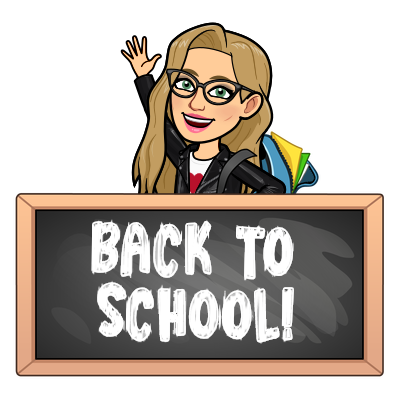This post is probably more for teachers than parents, but it might give parents some insight into what we teachers do besides plan lessons, grade essays,, and teach their kiddos. :)

Every year I am inundated with emails containing very important information about my students. Some of the emails contain Individualized Education Plans (IEPs), 504 plans, and important medical information. In addition, I have parents fill out a digital form (I love Google), and one of my questions is whether or not they have anything important they'd like to share with me regarding their child. Many parents tell me things like: my child wears glasses, my child has ADHD, my child has been homeschooled since kindergarten, etc. With 150ish students, the amount of information I receive can be overwhelming. In the past, I created folders in Google for IEPs and 504s, but they are easy to access. The information was not organized by the period in which I had the student either. The emails I received were buried in my email folders. The information parents provided on the Google form vanished onto a spreadsheet that became another document to look for in my Google drive and very hard to read with my old eyes! 

This year I decided I would come up with a way to keep ALL of this information in one spot. It is important information; it is information that my students need me to know! It was a bit time-consuming, but I think the investment will be worth it. I created a table for each period on ONE Google Doc. It looks something like this:
PERIOD 0-ENGLISH 7 (Obviously, this is all fake info)
NAME
|
Notes from Parents/Accommodations
|
Photo of IEP Accommodations (if available)
|
Action Taken/Contact
|
Doo, Scooby-IEP
|
Scooby is very shy. He has trouble making friends. My husband and I are currently going through a divorce and he's having a tough time.
|
Touched base with the parent via email on 9/1 acknowledging that I read the IEP and thanked her for her feedback.
Touched base with the student on 9/2 and moved her seat next to a very friendly, kind student.
| |
Bueller, Ferris-504
|
Ferris has a severe bee sting allergy.
EPI pen in the nurse’s office.
|
Contacted parent on 9/2 letting her know I had read over Michael’s 504 plan.
|
What I love about this new system is that ALL of the information, regardless of what it is, resides in ONE document. It is arranged by PERIOD which makes it very easy to find what I need. It prevents me from getting confused! I love the column I added for contact/action taken. It is easy to lose track of who I have communicated with and when.
I am already loving my students and looking forward to another wonderful year.
Comments
Post a Comment